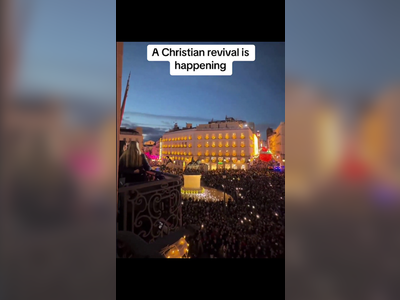
2019 is the year of the ‘climate strike’
Massive protests across the globe over the past year reflect people’s growing sense of urgency to take action on climate change. Around this time last year, a panel of scientists convened by the United Nations released a report that found that the world had 12 years left (11 now) to dramatically cut down its use of fossil fuels in order to avoid the most catastrophic effects of climate change. For many, increasingly more destructive wildfire and hurricane seasons have made the risks associated with climate change hit much closer to home.
About 1.6 million students walked out of classrooms in a coordinated day of strikes across more than 120 countries in March. Eighteen-year-old Audrey Lai talked with The Verge during a demonstration that day about the previous year’s devastating fires in California; she was worried about a repeat. “It’s going to become fire season instead of fall,” she said. “Isn’t there something we should be doing?”
One of the heroines behind the popularity of climate strikes is 16-year-old Greta Thunberg, who began weekly walkouts in Sweden in 2018. Her high-profile protests outside of Swedish parliament catapulted her into the spotlight, and she was a rumored candidate for the Nobel Peace Prize this year. She didn’t end up with that prestigious award, but she did announce the word of the year win on Twitter.
Global protests flared up again in September, ahead of a United Nations summit in New York. Tech workers across giants like Amazon, Google, and Microsoft walked out of headquarters to support protests even as CEOs like Jeff Bezos announced new pledges to make business more sustainable.
“I’m joining in the climate strike because every big structural change in history has come [because] of a grassroots insurgence,” 17-year-old Felíquan Charlemagne told The Verge at the time. “The climate strike movement, a grassroots, decentralized movement, has the power to change conversations and force leadership to deliver the bold climate solutions we need to not only stop climate change, but build a better world and economy for us all.”
The following month, hundreds of activists were arrested during what they called a “global climate rebellion.” The group behind it, called Extinction Rebellion, began in the UK and has literally bled into major cities across the world. They sprayed the Westminster Treasury with fake blood and then doused the iconic Wall Street bull with it during acts of civil disobedience this October.
This year’s climate strikes aren’t over yet; there are more protests planned ahead of the annual United Nations climate conference taking place in Madrid this December. Collins lexicographers pinpoint the origin of the term “climate strike” to demonstrations surrounding the same conference in France in 2015, when world leaders adopted the Paris climate accord.










